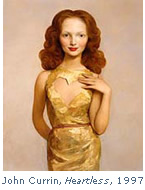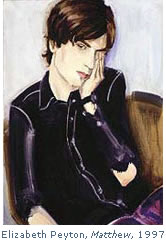Taxonomy for a Modern Art Museum
Why taxonomize? According to the logic of the museum collection, we must taxonomize art from a given period and culture in order to explain it to a public, to store and care for it, to study and publish on it, to frame it, to reproduce it, etc. I have created my taxonomy of modern and contemporary art media with my experience caring and exhibiting the collection of prints at The Museum of Modern Art in mind, tracking how specific artistic media behave in space and time, how they exert themselves on viewers, and what sub-media constitute their production. While I want this taxonomy to serve as a model for precise and clear classification of art objects, it resolutely refuses to play this role. Instead, it emphasizes how these media transgress and trespass each other.
 By highlighting the seemingly obvious, this taxonomy allows us to link similar traits across diverse media: It is interesting, but not terribly surprising, that sculpture, architecture, and installation art share the physical orientation of "Variable." But, it is very surprising that exemplary postmodern genres in painting and drawing—with John Currin and Elizabeth Peyton respectively representing these genres—would both be the somewhat old-fashioned genre of portraiture.
By highlighting the seemingly obvious, this taxonomy allows us to link similar traits across diverse media: It is interesting, but not terribly surprising, that sculpture, architecture, and installation art share the physical orientation of "Variable." But, it is very surprising that exemplary postmodern genres in painting and drawing—with John Currin and Elizabeth Peyton respectively representing these genres—would both be the somewhat old-fashioned genre of portraiture.  Unexpected clusters also emerge: Printmaking, artist's books, and video all share the social interface parameters of "Public/Private", as well as the scale parameter "Small" and the high/low parameter "Low."
Unexpected clusters also emerge: Printmaking, artist's books, and video all share the social interface parameters of "Public/Private", as well as the scale parameter "Small" and the high/low parameter "Low."
The spreadsheet structure reflects the kind of corporate organizational structure that a museum necessarily imposes on the objects under its care. The spreadsheet also implies an ongoing and increasingly unmanageable selection of objects, and their characteristic parameters. As artists experiment with digital media and installation their works increasingly transgress the parameters of media. The ordering of the media from left to right on the top horizontal axis reflects the hierarchy of media in the museum: the primacy of painting and sculpture, the supposed authenticity of the artist's drawing, the contingent status of photography as a modern art, architecture and design, printmaking, and then the more ephemeral media such as artists' books, video, film, new media (meaning all digital media), and installation. All the media to the right of printmaking constitute art objects made in multiples, subverting the historical importance of the original work of art and in the process undercutting their status in the fine arts media hierarchy. Installation occupies the position on the extreme right, not only because of its status in the hierarchy, but because it is the media whose very existence depends on transgressing and appropriating aspects of all of the media to the left of it.
I have attempted to create parameters that express qualities of time (both in its narrative and historical forms) and space (both in terms of the object's internal structure and its spatial relationship to the world). I have chosen to chart exemplary genres and artists from two historical periods, modernist and postmodernist, in order to emphasize that this taxonomy (and a museum) must be able to deal with works from disparate historical periods in order to be a broad and provocative tool for examining media structure. *Parameters marked with asterisks are artists' names.
Harper Montgomery
Department of Art History
Winter 2004
Why taxonomize? According to the logic of the museum collection, we must taxonomize art from a given period and culture in order to explain it to a public, to store and care for it, to study and publish on it, to frame it, to reproduce it, etc. I have created my taxonomy of modern and contemporary art media with my experience caring and exhibiting the collection of prints at The Museum of Modern Art in mind, tracking how specific artistic media behave in space and time, how they exert themselves on viewers, and what sub-media constitute their production. While I want this taxonomy to serve as a model for precise and clear classification of art objects, it resolutely refuses to play this role. Instead, it emphasizes how these media transgress and trespass each other.
 By highlighting the seemingly obvious, this taxonomy allows us to link similar traits across diverse media: It is interesting, but not terribly surprising, that sculpture, architecture, and installation art share the physical orientation of "Variable." But, it is very surprising that exemplary postmodern genres in painting and drawing—with John Currin and Elizabeth Peyton respectively representing these genres—would both be the somewhat old-fashioned genre of portraiture.
By highlighting the seemingly obvious, this taxonomy allows us to link similar traits across diverse media: It is interesting, but not terribly surprising, that sculpture, architecture, and installation art share the physical orientation of "Variable." But, it is very surprising that exemplary postmodern genres in painting and drawing—with John Currin and Elizabeth Peyton respectively representing these genres—would both be the somewhat old-fashioned genre of portraiture.  Unexpected clusters also emerge: Printmaking, artist's books, and video all share the social interface parameters of "Public/Private", as well as the scale parameter "Small" and the high/low parameter "Low."
Unexpected clusters also emerge: Printmaking, artist's books, and video all share the social interface parameters of "Public/Private", as well as the scale parameter "Small" and the high/low parameter "Low."The spreadsheet structure reflects the kind of corporate organizational structure that a museum necessarily imposes on the objects under its care. The spreadsheet also implies an ongoing and increasingly unmanageable selection of objects, and their characteristic parameters. As artists experiment with digital media and installation their works increasingly transgress the parameters of media. The ordering of the media from left to right on the top horizontal axis reflects the hierarchy of media in the museum: the primacy of painting and sculpture, the supposed authenticity of the artist's drawing, the contingent status of photography as a modern art, architecture and design, printmaking, and then the more ephemeral media such as artists' books, video, film, new media (meaning all digital media), and installation. All the media to the right of printmaking constitute art objects made in multiples, subverting the historical importance of the original work of art and in the process undercutting their status in the fine arts media hierarchy. Installation occupies the position on the extreme right, not only because of its status in the hierarchy, but because it is the media whose very existence depends on transgressing and appropriating aspects of all of the media to the left of it.
I have attempted to create parameters that express qualities of time (both in its narrative and historical forms) and space (both in terms of the object's internal structure and its spatial relationship to the world). I have chosen to chart exemplary genres and artists from two historical periods, modernist and postmodernist, in order to emphasize that this taxonomy (and a museum) must be able to deal with works from disparate historical periods in order to be a broad and provocative tool for examining media structure. *Parameters marked with asterisks are artists' names.
Harper Montgomery
Department of Art History
Winter 2004